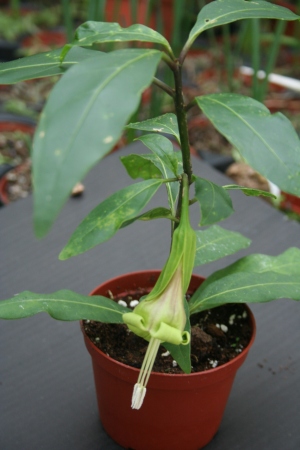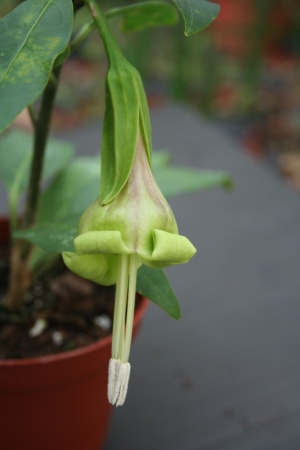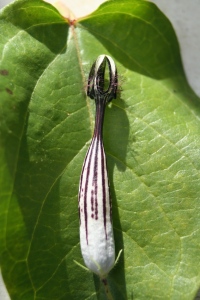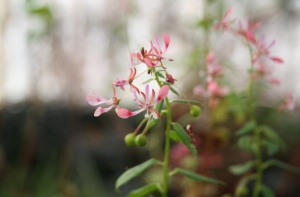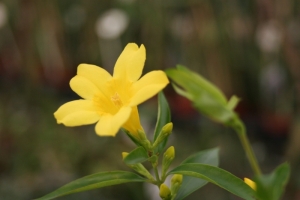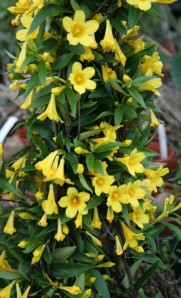This plant grows in the cloud forest of Brazil. It is seldom seen in cultivation and has a similar growth habit as the Solandra of which it is a relative. The Markea can grow to a height of 2 metres and flowers easily. The flowers are green with a reddish tint on the outside. They are 9 cm long, 10 cm if you include the protruding stems. The flower is bell-shaped and 3 cm in diameter. The tips of the petals fold back. The leaves are 13 x 4 cm and are not positioned opposite each other, contrary to the position of the leaves in other plants which tend to grow in opposite pairs. The stems have a reddish tint.
There are a few other species of Markea, which I have not seen myself, but four are shown on the Cornell University website (see here). The plant can flower from cuttings after about 6 months as the one in the photo did. That particular plant was 23 cm high when I took the photo. The flower lasted about 2 weeks and I tried self-pollinating it in the hope to get fruit and seed, but it did not work. The flower dropped off, which may suggest that cross-pollinating is necessary. Unfortunately, I do not have a second plant, so will have to find one.
